Tempted to try building with stone? This project will convince you of its merits
Welcome to the Future Observatory's The Stone Demonstrator, a project conceived to show off the material's strong points, now on display in West London
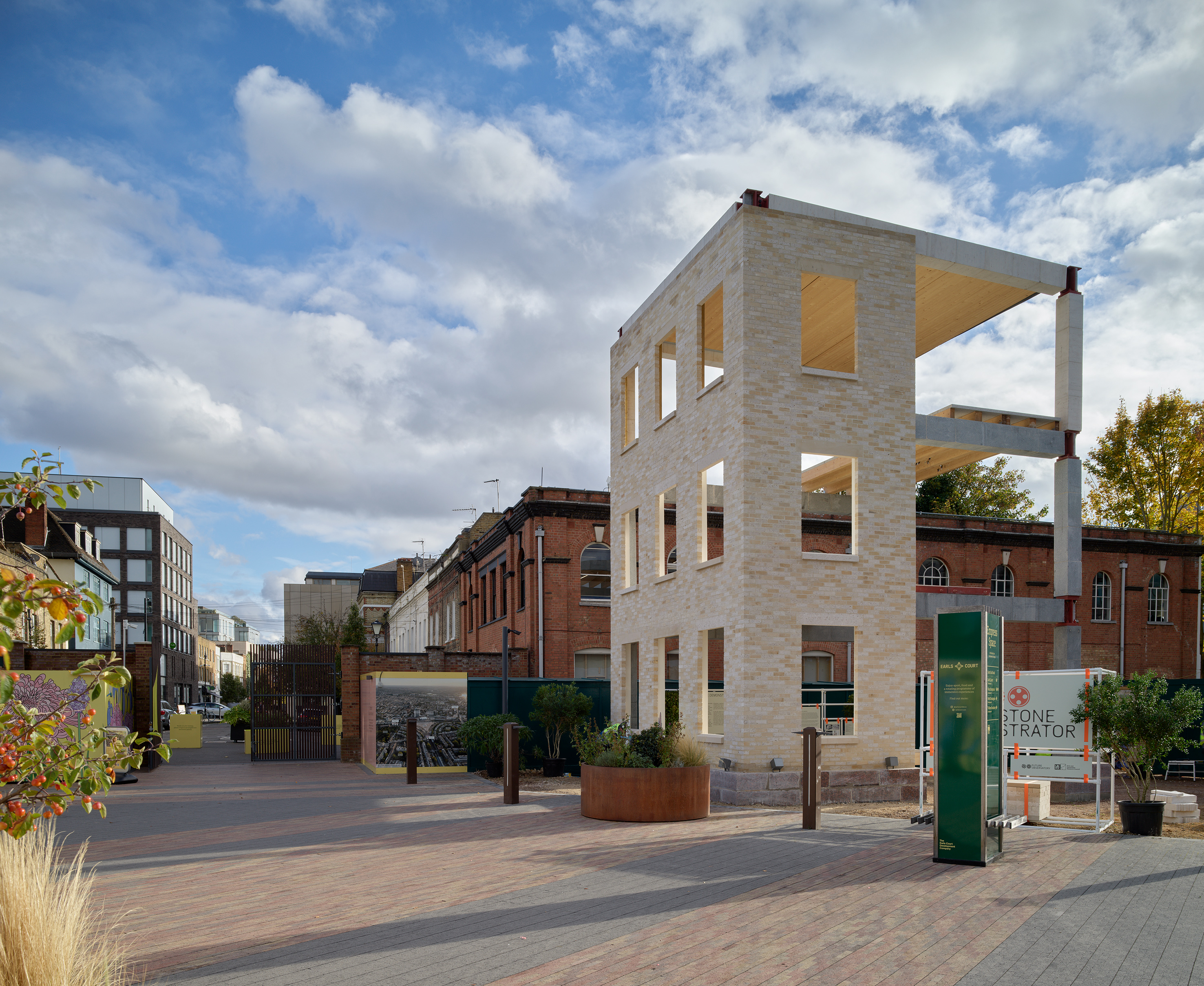
If you hear the pitch for building with stone, it really is a no-brainer. The material is solid, consistent, sustainable and abundant. It is not a marketing spiel either; the numbers back it up. Creating architecture through stone construction can result in less than 10% of the carbon emissions of, say, the currently more commonly used steel frame, and less than a third compared to the concrete equivalent.
So why has this not caught on yet? Part of the reason might be misconceptions (that it's a finite resource, or more expensive, or difficult to work with), or red tape (often, the industry is missing appropriate guidelines for its use) or market forces and consumer demands. Architect Amin Taha, principal of Groundwork and the architect behind the Future Observatory's newest project, The Stone Demonstrator – a structure currently on display in West London, is on a mission to dispel the myths linked to building with stone and get the industry on the material's side.
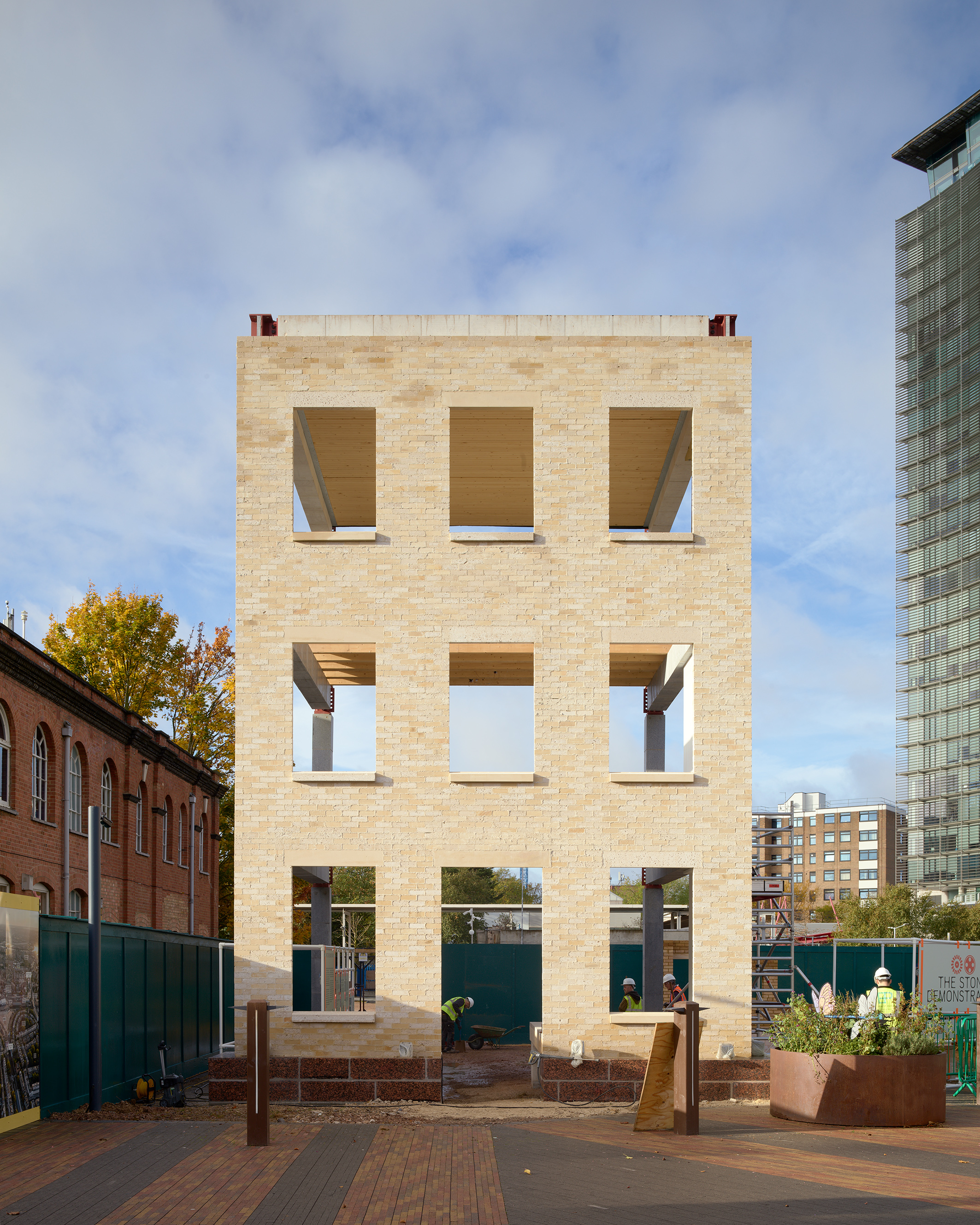
Enter The Stone Demonstrator and explore building with stone
The Stone Demonstrator is a case study – a construction created as a showcase of how stone can be used, efficiently and sustainably, in every aspect of design and building, from foundations and floors, to walls and ceilings. Situated in Empress Place in Earl's Court, the project was created by the Design Museum's research arm focusing on green transition, the Future Observatory, together with the UKRI Arts and Humanities Research Council (AHRC), London-based architect and stone use pioneer Amin Taha, and specialist engineers Webb Yates and Arup.
'The idea is that people can come and study it and understand what the supply chains need to be, what the trade skills need to be, and that ultimately we're trying to move the construction industry away from steel and concrete because of the high carbon emissions associated with them, and fire clay bricks,' says Taha.
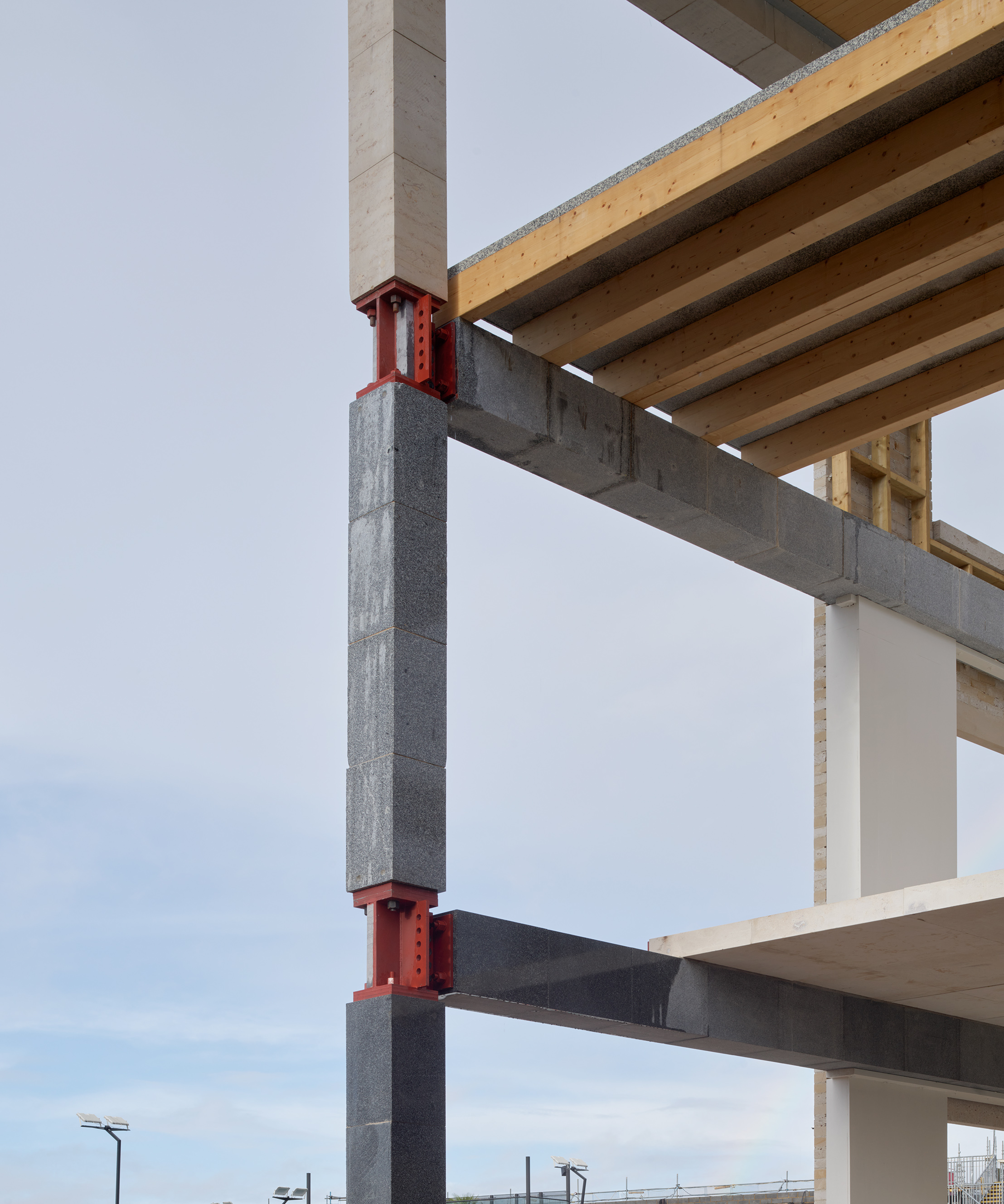
The structure spans three storeys tall and was designed as a sampling of different techniques and block sizes when building with stone. It uses pre-tensioned stone structures (both beams, slabs and columns) to a footprint of 6.5m x 6.5m and is surrounded by a garden that offers seating areas in further stone configurations - highlighting different shapes and sizes of stone bricks in a green setting by landscape designers Lyndon Osborn & Team.
Part of the point, Taha explains, is that it 'is not designed to look radical,' so that visitors - clients, architects or contractors - can see that existing skills and aesthetics can be used and achieved through stone construction as well, only with a fraction of the carbon emissions.

'It is a cost-effective, easy and normal way of constructing things,' stresses engineer Liam Bryant of Webb Yates. 'We have reached a point where it's somehow considered a complex and unusual, and high-risk construction method to build with stone, when it is in fact 1/3 of the process in all aspects,' compared to, say, building with concrete, which is a lot more labour-intensive. On top of this, 'it's also quite a local material, because everywhere you are in the world, you'll have a different stone,' Taha adds.
Receive our daily digest of inspiration, escapism and design stories from around the world direct to your inbox.
The results are impressive. 'The Stone Demonstrator is a prototype of an alternative way to build that reduces carbon emissions by approximately 70% compared to a reinforced concrete frame, and 90% compared to a steel frame,' reads the Future Observatory's report. And if the government plans to build 1.5 million homes in the near future are to be followed, then choosing the right material, one which doesn't burden the environment, feels more crucial than ever.
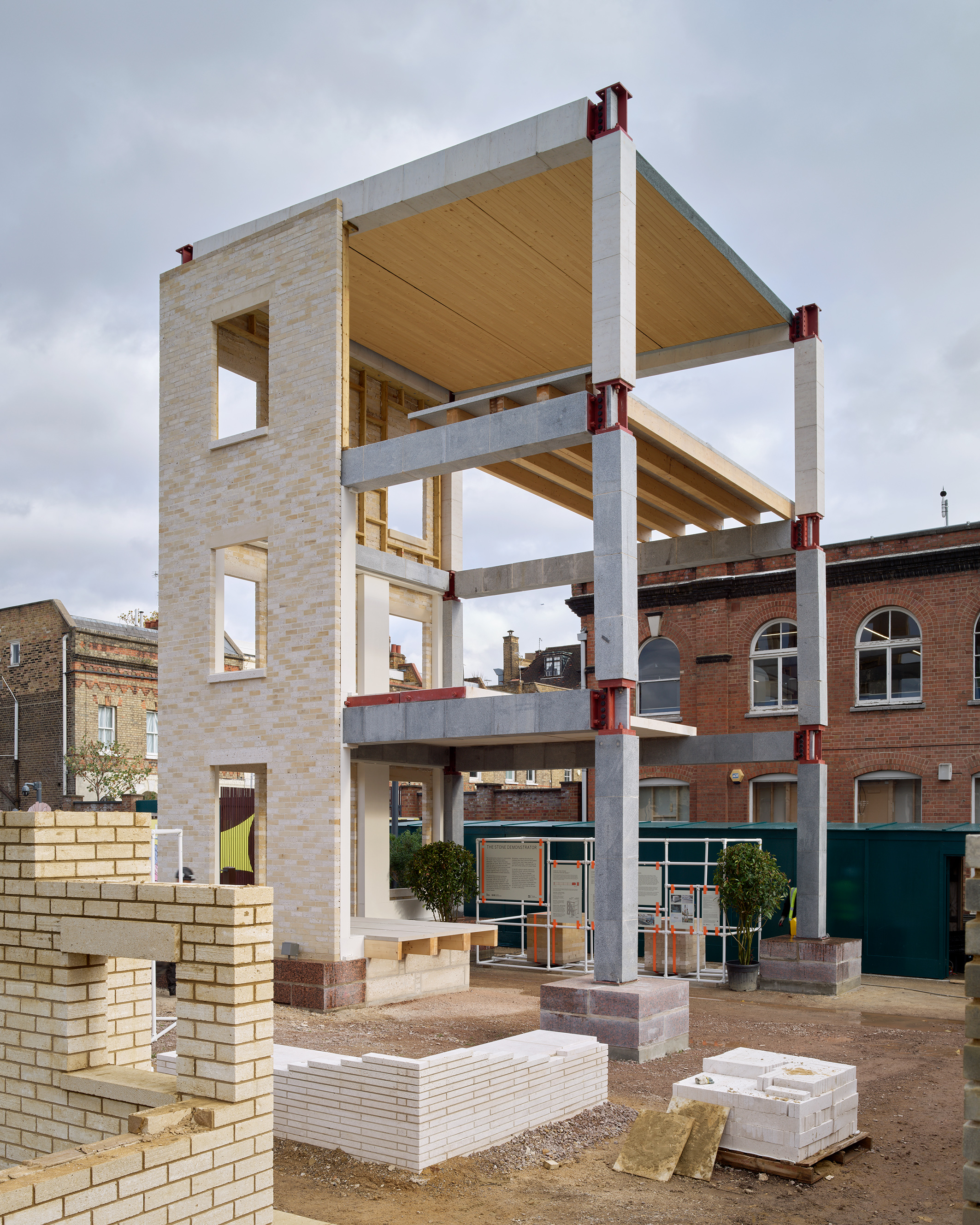
If you want to compare results, the team has numbers to back up its claims. A clay brick facade can emit around 40,000 kg of carbon dioxide; at The Stone Demonstrator, a similar structure produces some 3,000kg of CO2. Justin McGuirk, director of Future Observatory highlighted that 'it’s a building as a research tool, a 1:1 scale demonstrator of an ultra-low-carbon structure for the sector to study. And the accompanying design guide being produced by UCL [led by Professor Wendel Sebastian] is another key step in the adoption of structural stone.'
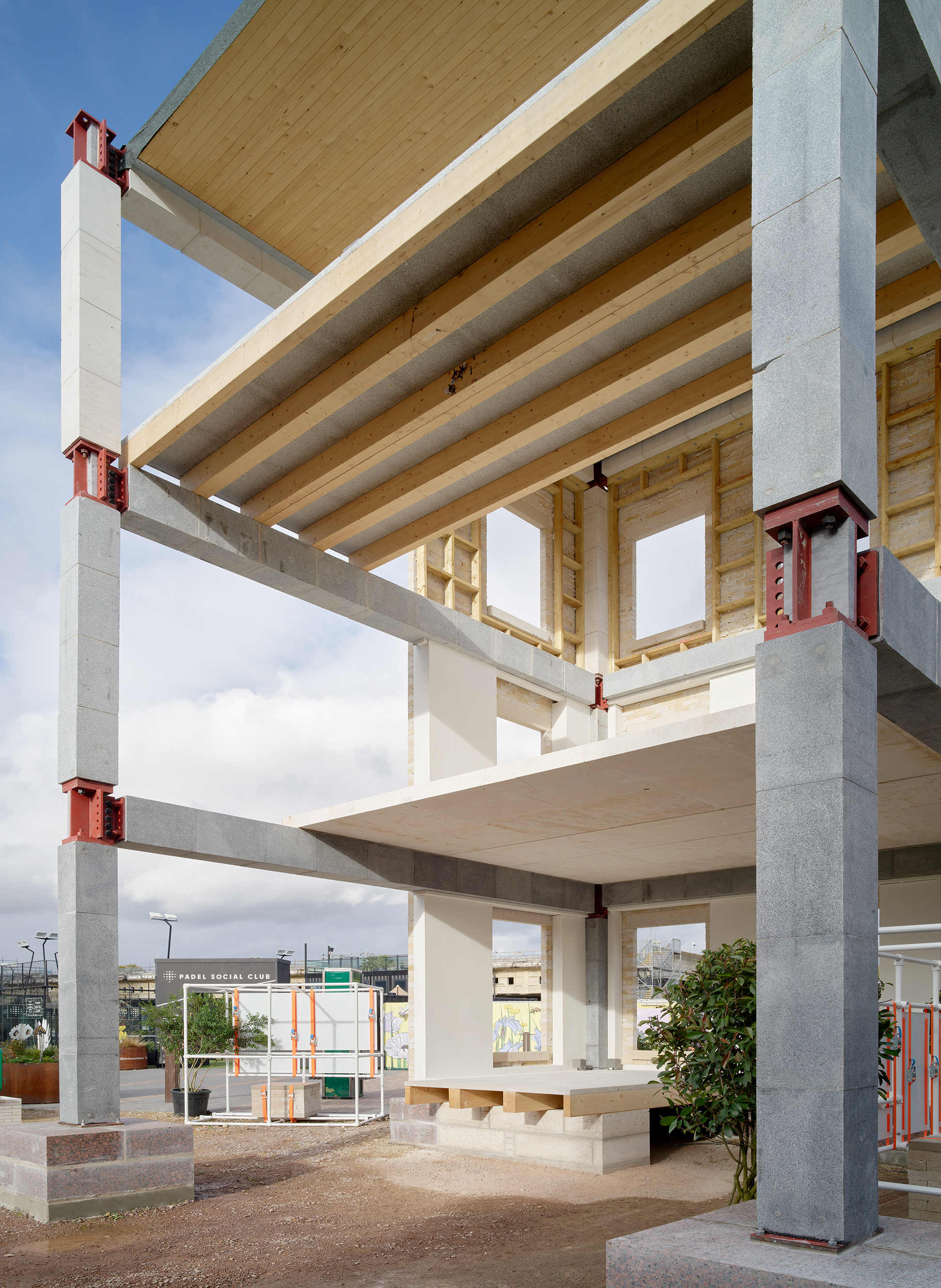
The Stone Demonstrator is set to stay on its West London site and remain open to the public for a few months at least. Its goal is to provide evidence and a powerful talking point for the building with stone – an often overlooked material, but one which its engineers here, Webb Yates and Arup, argue can be used a lot more widely and with impressive results. The self-supporting structural frame they have designed would be even suited 'for buildings up to 80 storeys tall,' and even in seismic areas, they say. It is hard to remain indifferent in the face of their facts and enthusiasm.
Ellie Stathaki is the Architecture & Environment Director at Wallpaper*. She trained as an architect at the Aristotle University of Thessaloniki in Greece and studied architectural history at the Bartlett in London. Now an established journalist, she has been a member of the Wallpaper* team since 2006, visiting buildings across the globe and interviewing leading architects such as Tadao Ando and Rem Koolhaas. Ellie has also taken part in judging panels, moderated events, curated shows and contributed in books, such as The Contemporary House (Thames & Hudson, 2018), Glenn Sestig Architecture Diary (2020) and House London (2022).
-
 Terrified to get inked? This inviting Brooklyn tattoo parlour is for people who are 'a little bit nervous'
Terrified to get inked? This inviting Brooklyn tattoo parlour is for people who are 'a little bit nervous'With minty-green walls and an option to 'call mom', Tiny Zaps' Williamsburg location was designed to tame jitters
-
 Let’s hear it for the Chopard L.U.C Grand Strike chiming watch
Let’s hear it for the Chopard L.U.C Grand Strike chiming watchThe Swiss watchmaker’s most complicated timepiece to date features an innovative approach to producing a crystal-clear sound
-
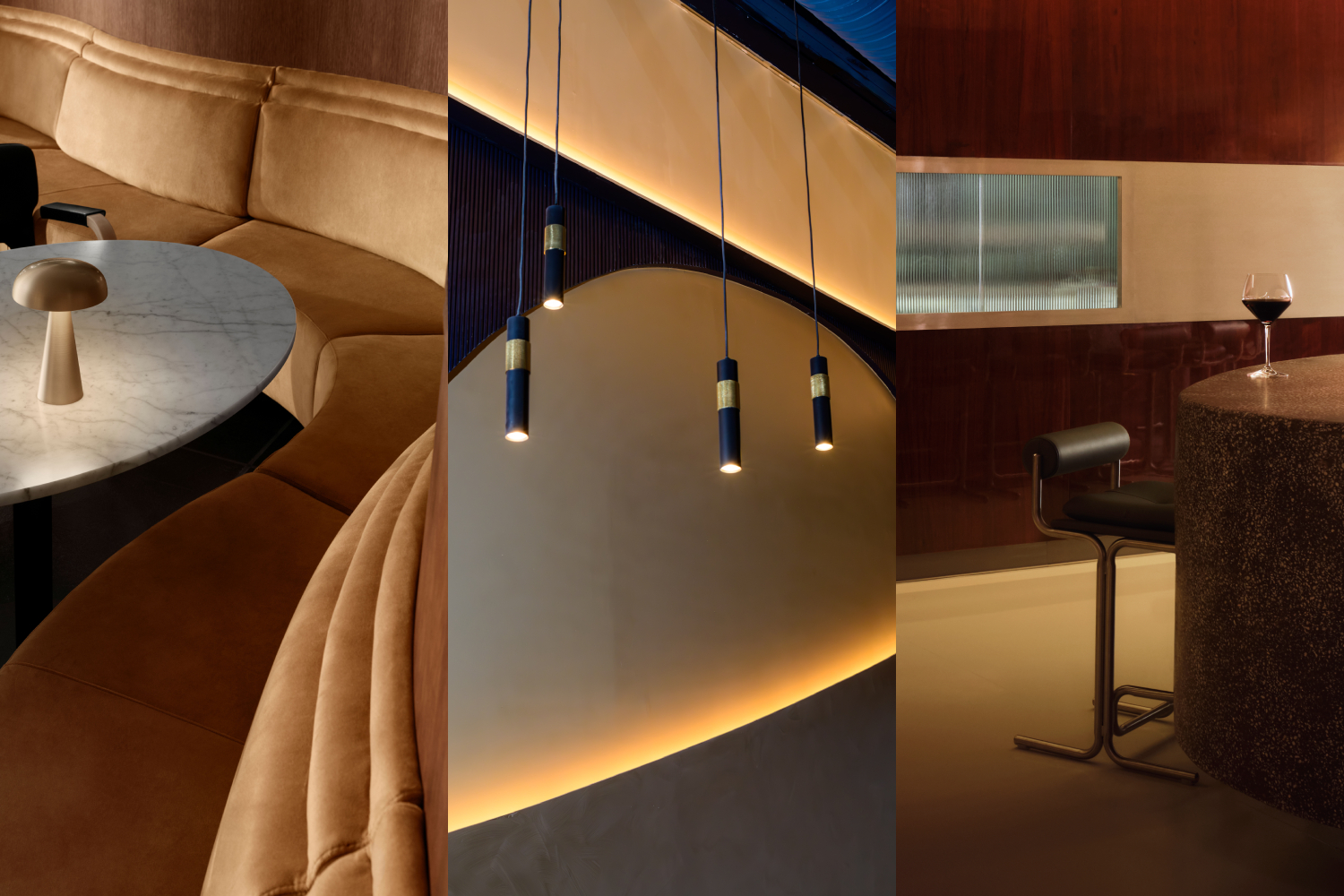 Form... and flavour? The best design-led restaurant debuts of 2025
Form... and flavour? The best design-led restaurant debuts of 2025A Wallpaper* edit of the restaurant interiors that shaped how we ate, gathered and lingered this year
-
 Arbour House is a north London home that lies low but punches high
Arbour House is a north London home that lies low but punches highArbour House by Andrei Saltykov is a low-lying Crouch End home with a striking roof structure that sets it apart
-
 A former agricultural building is transformed into a minimal rural home by Bindloss Dawes
A former agricultural building is transformed into a minimal rural home by Bindloss DawesZero-carbon design meets adaptive re-use in the Tractor Shed, a stripped-back house in a country village by Somerset architects Bindloss Dawes
-
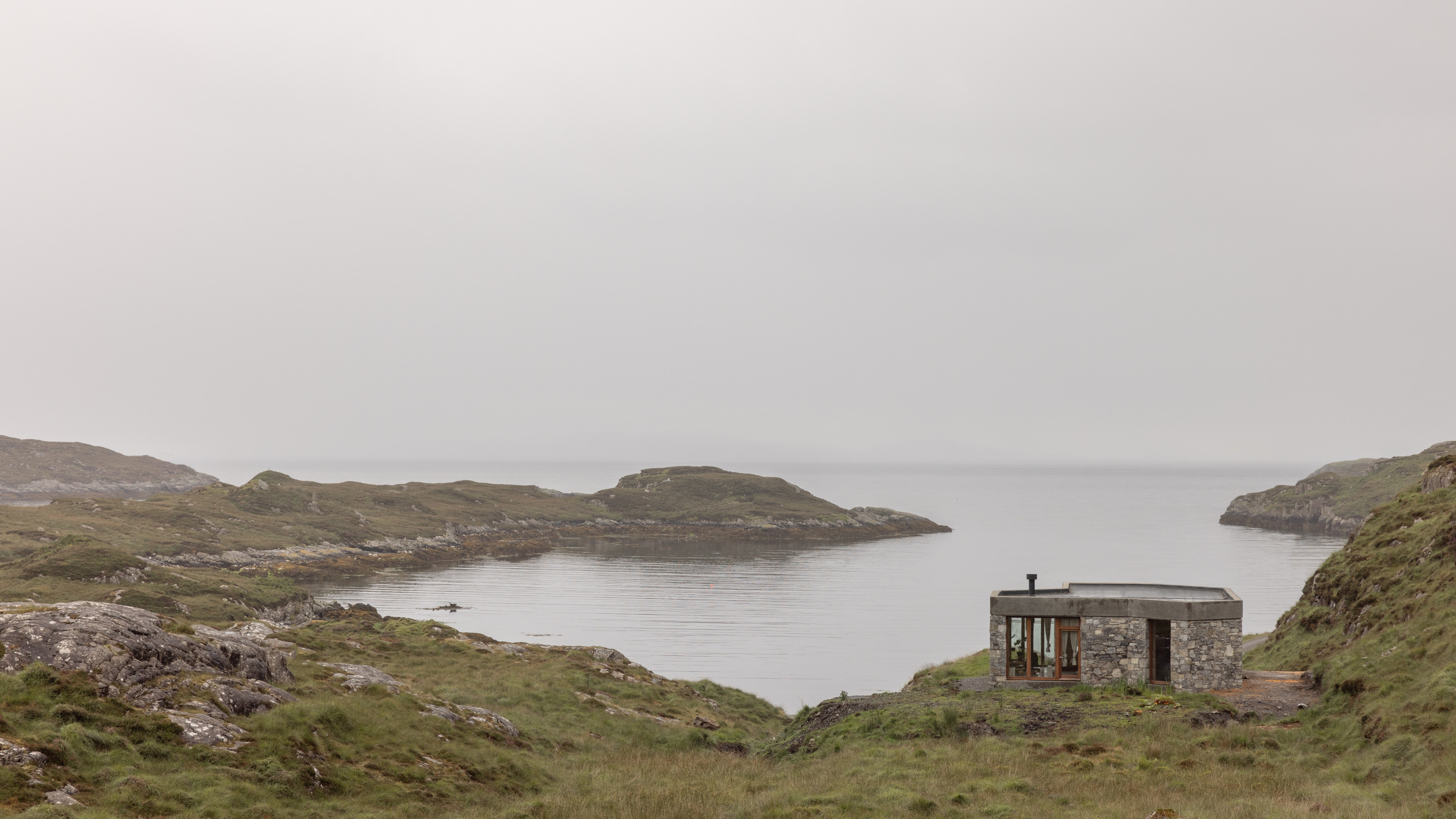 RIBA House of the Year 2025 is a ‘rare mixture of sensitivity and boldness’
RIBA House of the Year 2025 is a ‘rare mixture of sensitivity and boldness’Topping the list of seven shortlisted homes, Izat Arundell’s Hebridean self-build – named Caochan na Creige – is announced as the RIBA House of the Year 2025
-
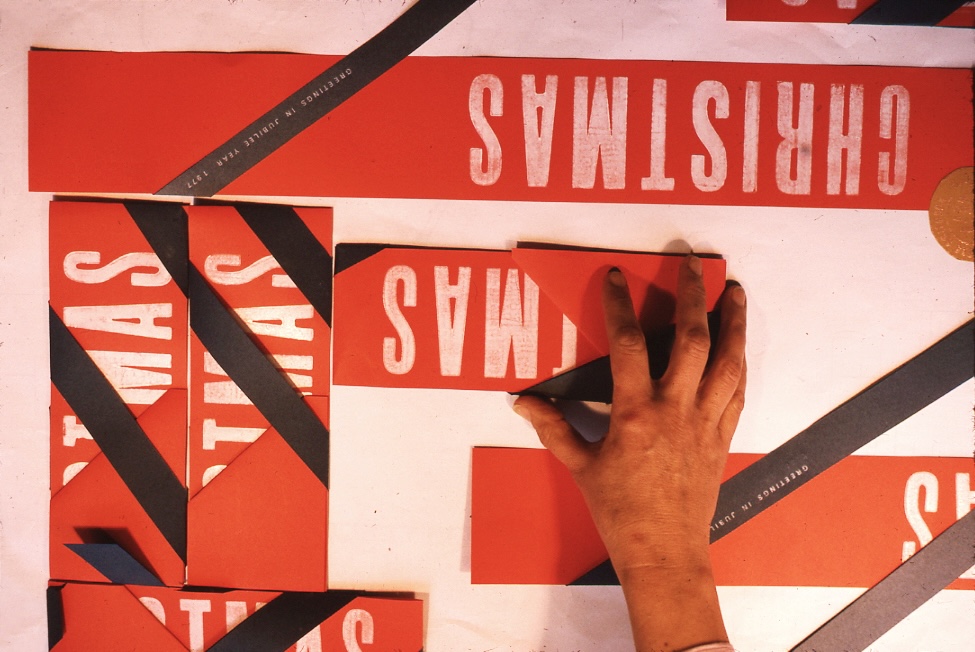 In addition to brutalist buildings, Alison Smithson designed some of the most creative Christmas cards we've seen
In addition to brutalist buildings, Alison Smithson designed some of the most creative Christmas cards we've seenThe architect’s collection of season’s greetings is on show at the Roca London Gallery, just in time for the holidays
-
 In South Wales, a remote coastal farmhouse flaunts its modern revamp, primed for hosting
In South Wales, a remote coastal farmhouse flaunts its modern revamp, primed for hostingA farmhouse perched on the Gower Peninsula, Delfyd Farm reveals its ground-floor refresh by architecture studio Rural Office, which created a cosy home with breathtaking views
-
 A revived public space in Aberdeen is named Scotland’s building of the year
A revived public space in Aberdeen is named Scotland’s building of the yearAberdeen's Union Terrace Gardens by Stallan-Brand Architecture + Design and LDA Design wins the 2025 Andrew Doolan Best Building in Scotland Award
-
 The Architecture Edit: Wallpaper’s houses of the month
The Architecture Edit: Wallpaper’s houses of the monthFrom wineries-turned-music studios to fire-resistant holiday homes, these are the properties that have most impressed the Wallpaper* editors this month
-
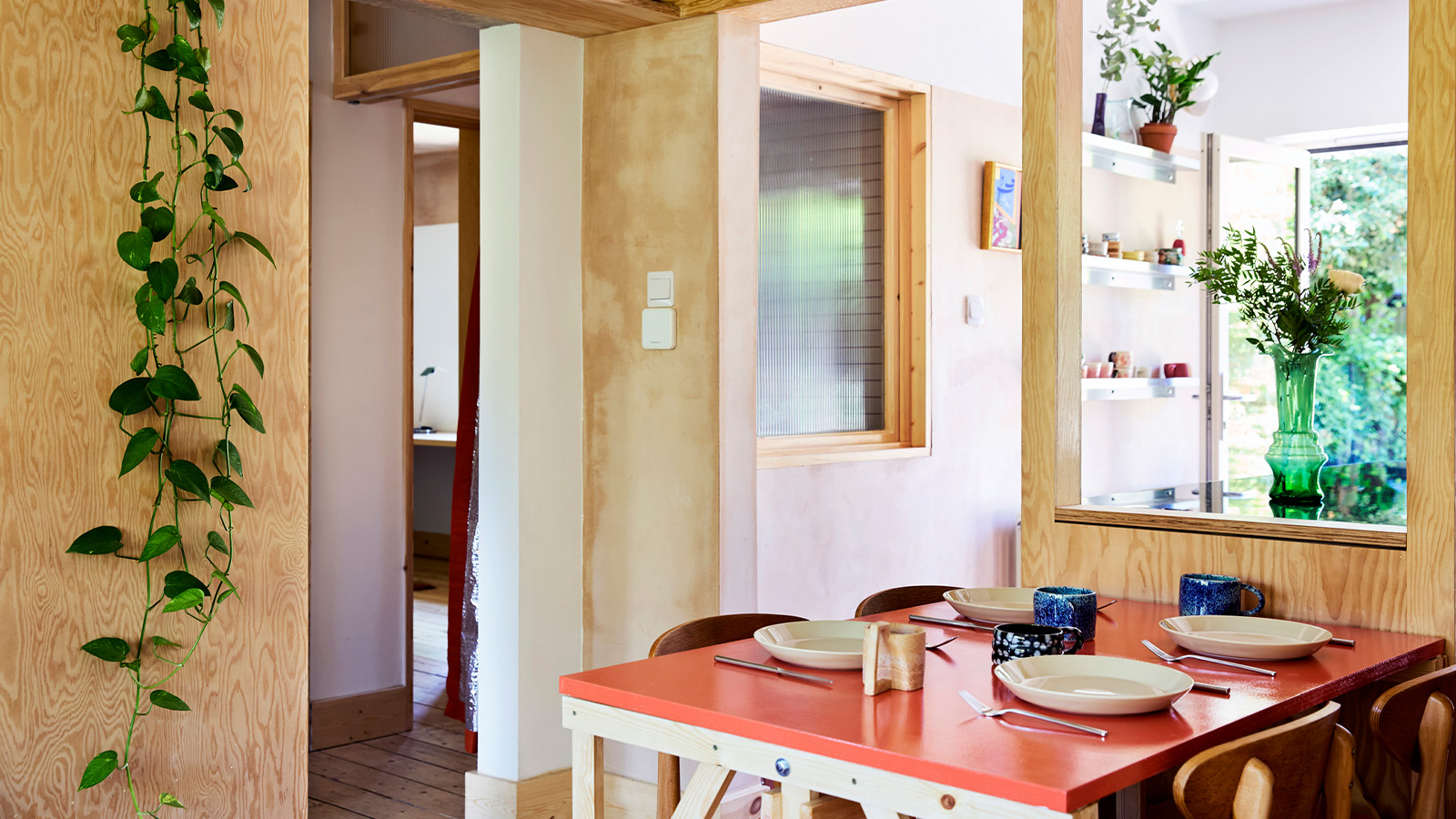 A refreshed 1950s apartment in East London allows for moments of discovery
A refreshed 1950s apartment in East London allows for moments of discoveryWith this 1950s apartment redesign, London-based architects Studio Naama wanted to create a residence which reflects the fun and individual nature of the clients